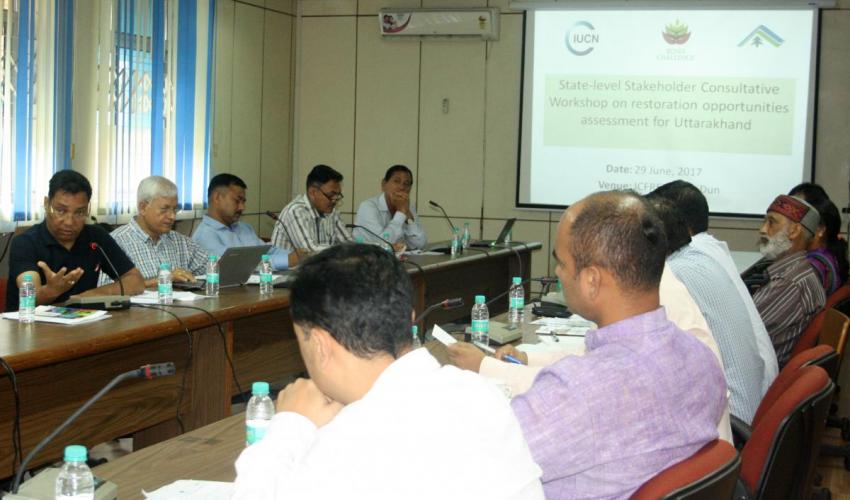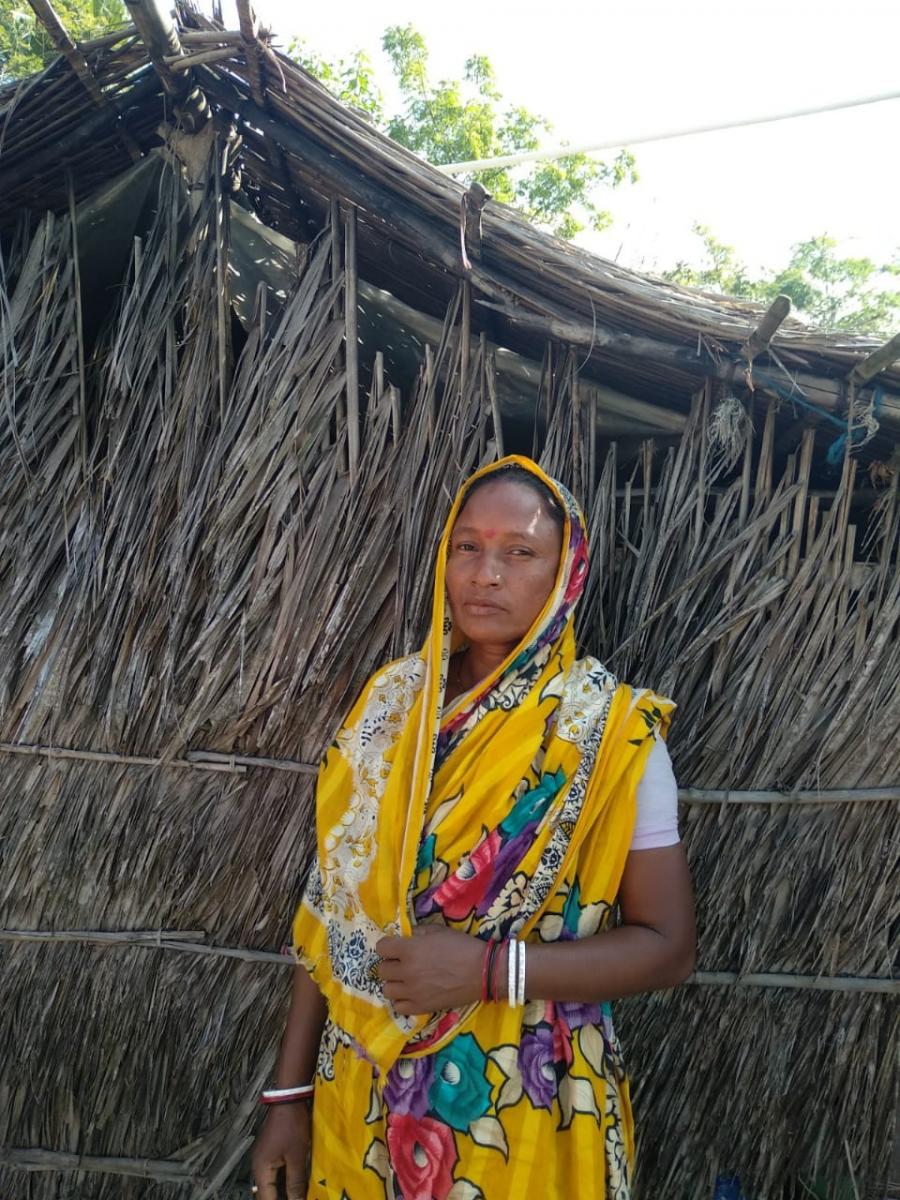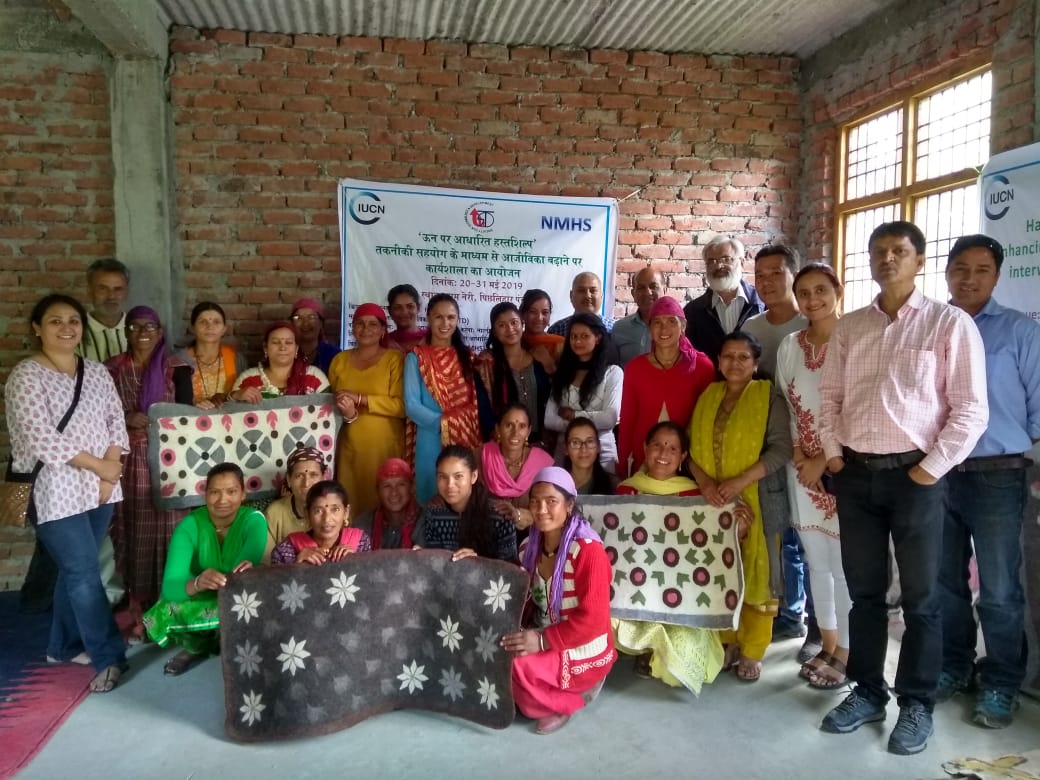Opportunities for Forest Landscape Restoration in Uttarakhand, India
The Global Partnership for Forest Landscape Restoration estimated that more than 2 billion hectares of degraded land is available for restoration globally - an area larger than South America! Forest Landscape Restoration (FLR) is the process of regaining ecological functionality and enhancing human well-being across deforested or degraded forest landscapes. The Restoration Opportunities Assessment Methodology (ROAM), developed by IUCN and the World Resources Institute (WRI), is the primary framework for building a forest landscape restoration programme from the ground-up. This in-depth step-wise methodology has proven effective in assessing and laying the groundwork for FLR interventions with practical steps for diverse stakeholders to restore landscapes at any scale.

Photo: © IUCN Asia / Anushree Bhattacharjee
ROAM is a flexible and cost-effective analytic process for identifying restoration opportunities at national or sub-national levels, as well as describing how those opportunities relate to food, water and energy security. The application of ROAM generates good context-specific knowledge relevant to understanding and addressing forest and land-use planning and management. The assessment also provides a participatory framework that can be used to set common restoration goals that address immediate priorities, such as livelihoods.
In India, IUCN is conducting a sub-national ROAM assessment in the State of Uttarakhand. The state was selected because it has immense potential for successful land-use and land management driven mitigation and adaptation programmes. IUCN has partnered with the G.B. Pant National Institute of Himalayan Environment and Sustainable Development (GBPNIHESD) for the technical aspect of the assessment. As part of this assessment, IUCN and GBPNIHESD organized a State-level Stakeholder Consultative Workshop at Dehra Dun in June, 2017. The primary objective of the workshop was to engage with all the relevant line departments, institutes and stakeholders who can contribute significantly towards the ROAM assessment. The workshop was designed in the format of panel discussions so as to enable panelists from various sectors to elaborate on: (i) the initiatives/investments which have gone into restoration in the state, (ii) successful interventions and lessons learnt from such restoration interventions, (iii) on-going priorities of actions that are relevant to restoration, and (iv) the enabling environment in the state for taking-up restoration actions.
The consultative workshop was inaugurated by Mr. D.V.S. Khati, Principal Chief Conservator of Forest (Wildlife), Uttarakhand who stressed that for any restoration project to be sustainable it needs to be carefully planned, implemented and monitored. Mr. P.R. Sinha from IUCN India remarked that ROAM is unique, as besides ecological restoration, it also strives to incorporate social and economic aspects. Ms. Anushree Bhattacharjee from IUCN India introduced the concept of ROAM to the audience. GBPNIHESD also presented their progress on the ROAM sub-national assessment. Mr. Puran Chand Patni and Ms. Bindu Devi from Pithoragarh district highlighted the many challenges faced by rural people in remote Himalayan villages such as water scarcity, vulnerability to landslides and forest fires, conflict with wildlife, and hoped that the study would come up with some ameliorative measures to address the same.
The inputs received from the panel discussions and feedback from the distinguished participants will help in driving further the ROAM process so that by the end of 2017, IUCN and GBPNIHESD are able to present a comprehensive and practically feasible document on restoration opportunities and strategies to the Government of Uttarakhand. Ms. Li Jia from IUCN Asia Regional Office in her closing remarks said FLR aims to involve multiple stakeholders so that ultimately it achieves a “smart democratic way of landscape governance."
For more information on 'Forest Ecosystem Rehabilitation for Integrated Mitigation and Adaptation Strategies' project, click here or follow the link on the right-hand side.



